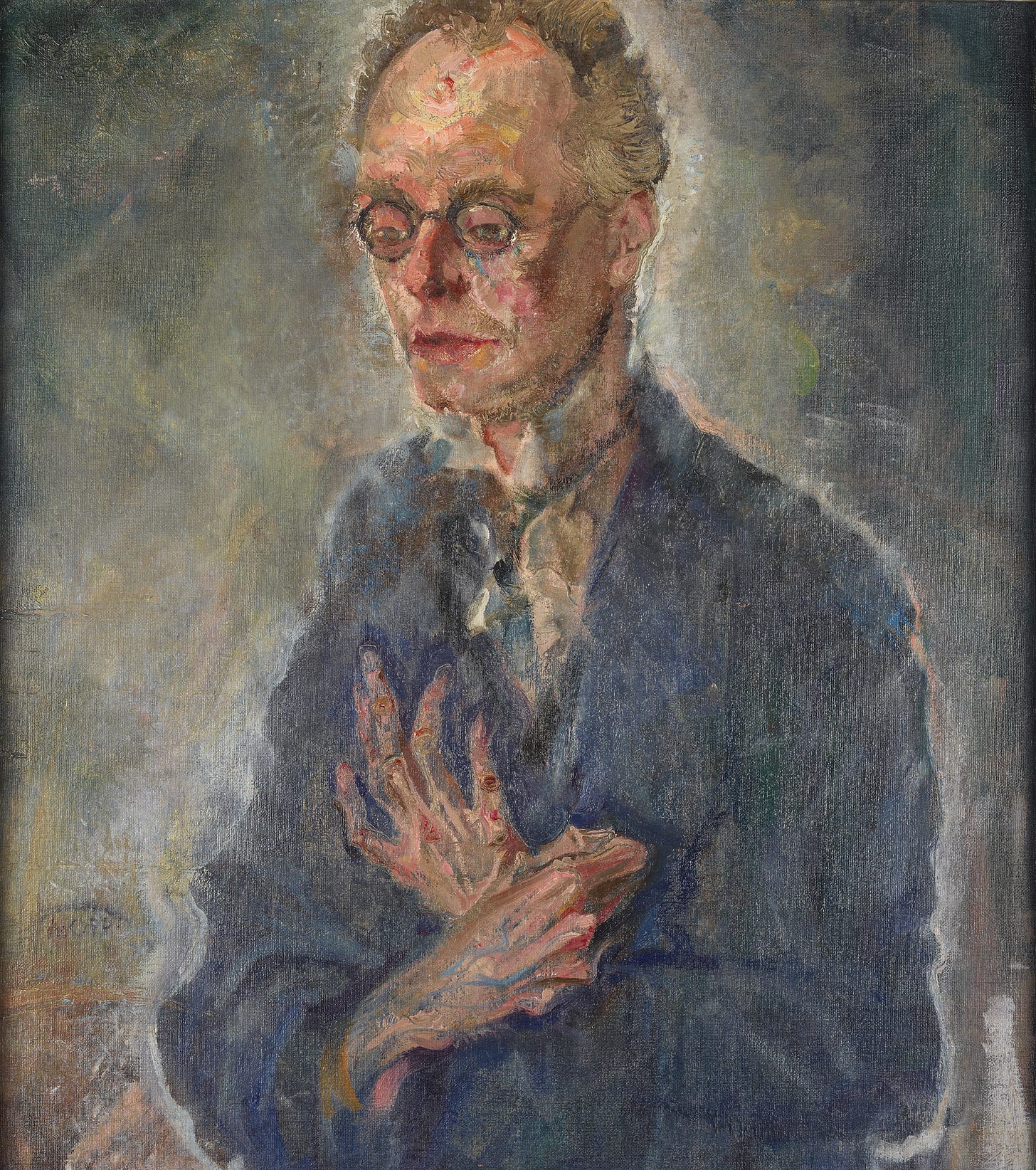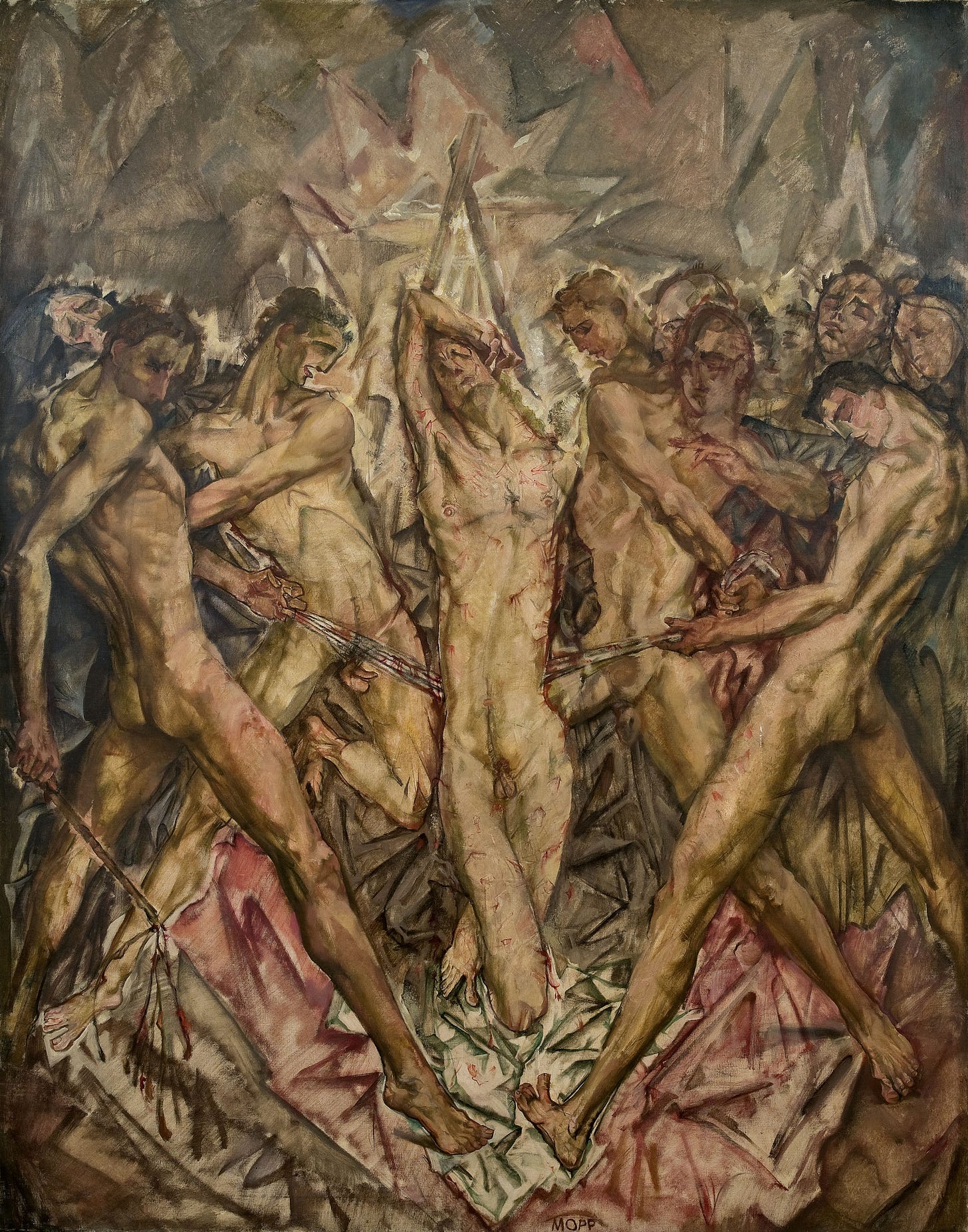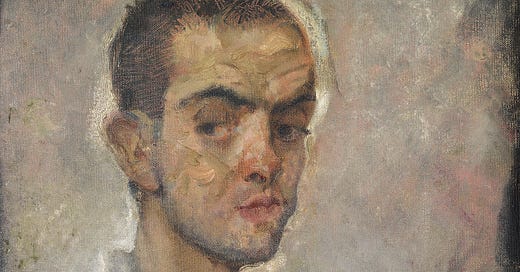Max Oppenheimer: Expressionist Painter
With this major retrospective, the Leopold Museum says it "intends to shed new light on the eminent and ground-breaking oeuvre of Max Oppenheimer"

Servus!
The Austrian expressionist painter Max Oppenheimer, whose work has been almost forgotten, is currently the subject of a major retrospective at Vienna’s Leopold Museum. The nature of his life, which took him to Berlin, Prague, Geneva, and Zurich in search of work and forced him into exile in New York after the Nazi annexation of Austria in March 1938, led to his collection being scattered across continents. Because he was a Jewish artist and a modernist, his work was also branded ‘degenerate’ by Nazi authorities, confiscated, and destroyed.
Born July 1, 1885 into an assimilated, middle-class Jewish family, the son of a journalist and music critic, Oppenheimer enrolled at Vienna’s Academy of Fine Arts in 1900 before continuing his studies at the Academy of Fine Arts in Prague, where he came under the influence of the liberal experimentalist Franz Thiele. Oppenheimer was evidently also heavily influenced by the great Austrian expressionist Oskar Kokoschka; the similarities and shared artistic language in their works are very much on display in the Leopold Museum’s retrospective.
Oppenheimer’s early work from around 1910 was dedicated to portraiture. His representations of his subjects, most prominently the German writer Heinrich Mann, are like apparitions. They are lit with a kind of ethereal glow that seems to emanate from the subjects themselves. The lines of their suit jackets wiggle and wave, while their facial expressions and posture radiate ennui, a mood accentuated by the portraits’ dark backdrops. There is a deep seriousness, in particular artistic seriousness, to Oppenheimer’s portrait work.

As this portraiture develops, and after Oppenheimer moved to Berlin in 1912, that ennui turns into sorrow. His subjects look not only sad but haunted. Look into their eyes and you will observe how red they all are—and lifeless too. Oppenheimer’s life was transitory, lived across the German speaking-world, and his work both in portrait and landscape also captures that now-lost world of interwar intellectual life. In The Chess Match (1925/30), set in a coffeehouse, black coffees sit on a silver tray on a table scattered with half-smoked cigarettes, captured chess pieces, and the daily papers: a scene of discourse and play fueled by caffeine and nicotine.
Some of Oppenheimer’s most striking work dealt with Christian and mythological imagery. Not only his rivalries in the art world—in particular with Kokoschka—but also his status as a Jew and homosexual in German and Austrian societies drew him towards images of pain and suffering. The Scourging (1913), a scene of intense flagellation, is a bloody quasi-religious work, but more so, with its lean, muscular figures, it is quite obviously homoerotic: a work of sadomasochistic fantasy, for in the suffering, there is also a kind of pleasure; a scene of orgiastic violence.

Throughout his working life, Oppenheimer experimented with form, subject, and style: graphic art, music, still life. It ended, however, as the Leopold Museum’s retrospective also shows, with a period of stifled creativity. After the Anschluss, Oppenheimer got out in the nick of time, fleeing via Switzerland to New York. Like many exiled artists, he struggled to support himself financially—relying on support from charitable and non-profit organizations—and took several years to complete commissioned works. A plan to return to Vienna in the 1950s never came to fruition. Oppenheimer would die, improvised and alone, in his apartment in New York on May 19, 1954.
Bis bald!
Thank you for subscribing to the Vienna Briefing. Every recommendation helps, so if you know someone who might be interested in reading this newsletter, consider sharing it with them today.
The Vienna Briefing is a reader-supported publication made possible by your donations. If you would like to contribute to my work, think about sending me a tip.
CEU Antisemitism Scandal
Central European University's rector has refused to meet with Jewish student representatives since Hamas's invasion of Israel to discuss antisemitism and Jewish student welfare, the Austrian Union of Jewish Students has claimed. The organization’s president Alon Ishay called CEU’s approach to antisemitism “toothless and ignorant,” an characterization CEU rejects.
Potential Terror Attack Thwarted
A 16-year-old male with Turkish heritage was taken into custody over the weekend suspected of planning an attack on a synagogue in Vienna. Authorities said the Austrian, who lived near Steyr in Upper Austria, had Islamic State propaganda and videos on his phone.
Wien Museum Reopens
The Wien Museum reopened last week following a multi-year renovation project that cost €108 million and led to the total re-conception of its permanent exhibition on the history of Vienna from 1700 to the present. Following the redevelopment, the Wien Museum will henceforth be free to visit.



